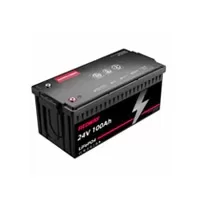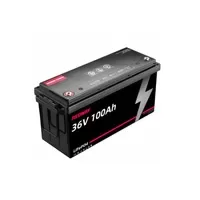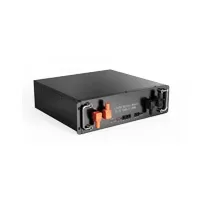Imagine the thrill of riding an electric bike, the wind in your hair, and a sense of freedom. In this blog post, we delve into the realm of 48V 20Ah batteries, unraveling their potential and discovering how far they can take you on your electrifying adventures. Get ready to be charged up with knowledge!
Understanding 48V 20Ah Batteries
In the world of electric vehicles and energy storage, the 48V 20Ah battery stands out for its remarkable power and efficiency. Let’s explore the key features that make these batteries essential for various applications.
- Voltage Significance (48V): The “48V” indicates the battery’s voltage, showcasing its ability to provide a steady and robust flow of electricity. This higher voltage ensures optimal performance, making it capable of handling heavier loads compared to batteries with lower voltage.
- Capacity Measure (20Ah): The “20Ah” signifies the battery’s capacity, measuring the amount of charge it can hold. Think of it as having a larger fuel tank, allowing for an extended distance before requiring a recharge. This capacity makes it ideal for electric bikes, scooters, golf carts, and small electric cars.
- Applications and Technology: Commonly utilized in portable applications like electric bikes, these batteries often employ lithium-ion technology. This choice ensures a lightweight build and a prolonged lifespan, making them suitable for various devices where weight is a crucial factor.
Understanding the 48V 20Ah battery is key when considering electric vehicles or devices relying on stored energy. With a perfect balance between power output and range potential, these batteries play a vital role in the world of sustainable transportation and portable energy solutions.
Factors Affecting Battery Range
To maximize the performance of a 48V 20Ah battery and optimize its range, it’s crucial to understand the key factors that influence how far it can take you. Let’s delve into these factors for effective battery management.
- Load Weight: The weight carried by the electric vehicle directly impacts the battery’s range. Heavier loads demand more power, reducing overall range. Consider this when planning applications for your 48V 20Ah battery, as lighter loads generally result in longer travels.
- Terrain Conditions: The terrain you traverse significantly affects your battery’s range. Uphill climbs and rough terrain increase energy consumption, reducing overall range. For optimal performance, factor in the terrain type and adjust your expectations based on the conditions you’ll encounter.
- Weather Influence: Weather conditions, such as temperature and wind speed, can impact battery efficiency. Extreme cold decreases lithium-ion battery efficiency temporarily, while strong winds create resistance. Being mindful of weather-related effects helps anticipate changes in your battery’s performance.
- Travel Speed: The speed at which you travel directly affects power consumption. Higher speeds drain the battery more quickly than lower speeds. Adjusting your speed based on your distance goals allows you to maximize the range of your 48V 20Ah battery.
Conclusion: To make the most of your battery-powered companion, understanding and considering factors like load weight, terrain conditions, weather, and travel speed is essential. By doing so and making adjustments where possible, you can effectively manage and extend the distance covered by your trusty 48V 20Ah battery.
Real-Life Examples of Distance Covered by a 48V 20Ah Battery
Wondering about the real-life capabilities of a 48V 20Ah battery? Let’s explore actual examples to showcase the potential range of this powerful and versatile energy source.
- Commuting Powerhouse – Sarah’s Story: Meet Sarah, a daily commuter relying on her electric bike. With her 48V 20Ah battery, she effortlessly covers around 30 miles per charge, ensuring a worry-free commute through city streets even during rush hour traffic.
- Weekend Warrior – Mark’s Adventure: Now, let’s look at Mark, an enthusiastic mountain biker conquering rugged trails. His 48V 20Ah battery allows him to explore approximately 25-35 miles on a single charge, providing the freedom for thrilling outdoor adventures without limitations.
- Delivery Dynamo – Jake’s Efficiency: Imagine Jake, a delivery driver making numerous stops throughout the day. His e-bike, equipped with a durable 48V 20Ah battery, enables him to deliver packages over distances ranging from 40-50 miles before needing a recharge, showcasing the efficiency of this reliable power source.
These examples illustrate the versatility and dependability of a well-charged and properly maintained 48V 20Ah battery in various scenarios. Keep in mind that factors like terrain, rider weight, speed, weather conditions, and assist levels may influence the actual range achieved with each ride. Whether commuting, exploring, or delivering, your trusty companion can meet the demands as long as you take care of it!
Stay tuned for more tips on optimizing your battery range!
Tips to Extend Battery Range
Unlocking the full potential of your 48V 20Ah battery involves adopting smart practices to extend its range. Here are practical tips to help you get the most out of your electric vehicle.
- Optimize Riding Style: Efficient riding is key to maximizing battery life. Smooth, steady acceleration and deceleration consume less power than abrupt actions. Adopting a gentle riding style can significantly extend the range of your 48V 20Ah battery.
- Maintain Tire Pressure: Regularly check and maintain proper tire pressure as recommended by the manufacturer. Well-inflated tires reduce rolling resistance, enhancing battery efficiency and contributing to an extended range.
- Minimize Weight: Shedding unnecessary weight lightens the load on your electric vehicle, positively impacting battery range. Remove any non-essential items or accessories to ensure optimal efficiency during your travels.
- Consider Terrain and Elevation: Plan routes mindful of terrain. Uphill climbs demand more power, while downhill descents provide an opportunity for regenerative braking. Strategic route planning helps optimize battery usage and overall efficiency.
- Utilize Pedal-Assist Mode: If available, engage the pedal-assist feature on your electric bike or scooter. This mode reduces reliance on the motor, easing the strain on the battery while offering you a chance for some physical activity.
- Charge Smartly: Practice smart charging habits by avoiding overcharging and unnecessary extended connections. These habits contribute to preserving the overall lifespan of your 48V 20Ah battery.
Incorporating these simple yet effective tips into your routine ensures you get the most mileage out of your 48V 20Ah battery, enhancing your overall electric vehicle experience.
Comparison with Other Battery Voltages and Capacities
Selecting the right battery voltage and capacity is crucial for optimal performance in electric vehicles. Let’s compare the popular 48V 20Ah battery with other options in the market.
- Voltage Comparison:
- Lower voltage batteries like 36V or 24V may have a lower upfront cost but offer less power and range compared to a 48V battery.
- If long-distance travel or increased power is a priority for your electric vehicle, opting for the higher voltage of 48V is a worthwhile consideration.
- Capacity Consideration:
- Higher capacity batteries within the same voltage range generally provide a longer range per charge.
- A 20Ah battery can cover a specific distance (discussed in previous sections), but if you need extended coverage without frequent recharging, investing in a higher Ah rating is beneficial.
- Balancing Needs and Practicality:
- Balance your requirements with practical considerations. Higher voltage batteries may demand specific charging equipment and could be bulkier.
- Consider factors such as budget, desired range, and compatibility with existing systems when choosing between different voltage and capacity options.
Conclusion: Choosing the right battery involves a thoughtful assessment of your needs, budget constraints, desired range, and system compatibility. Consultation with experts or suppliers is recommended to guide you towards the best-suited option for your specific requirements.
Choosing the Right Battery for Your Needs
Choosing the right battery is crucial for optimal device performance. Amid numerous options, consider key factors to simplify your decision-making process.
- Voltage Consideration:
- Opt for a 48V battery for applications demanding higher power output, such as electric vehicles or larger machinery.
- Higher voltage batteries are suitable for tasks requiring more energy.
- Capacity Evaluation:
- Assess the battery’s capacity, with a 20Ah rating indicating charge storage. For extended runtime without frequent recharging, consider a higher Ah rating.
- Tailor your choice based on the required duration between charges.
- Size, Weight, and Compatibility:
- Factor in size and weight based on your usage scenario for convenience and portability.
- Ensure compatibility by checking voltage and connector type alignment with your device before purchasing.
- Additional Features and Technologies:
- Explore specific features or technologies offered by batteries, such as safety enhancements or advanced monitoring capabilities.
- Consider these extras to further enhance performance based on your needs.




























